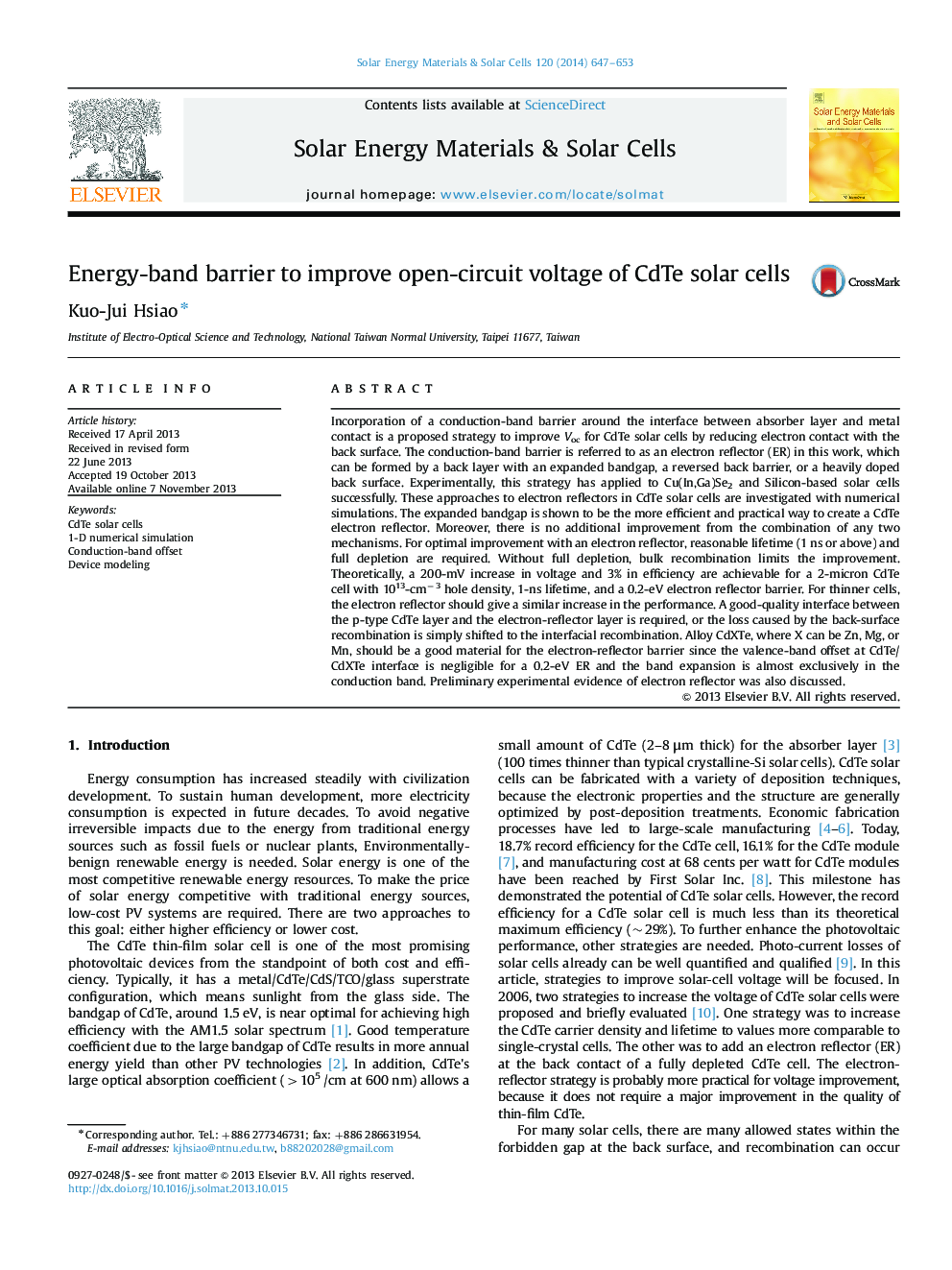| Article ID | Journal | Published Year | Pages | File Type |
|---|---|---|---|---|
| 78180 | Solar Energy Materials and Solar Cells | 2014 | 7 Pages |
•A conduction-band barrier at the back surface can improve Voc for solar cells.•The strategy for Voc improvement is investigated with numerical simulations.•This barrier can be formed by expanded bandgap or band bending at the back surface.•For optimal effect, reasonable lifetime (>=1 ns) and full depletion are required.•Theoretically, a 200-mV increase in voltage and 3% in efficiency are achievable.
Incorporation of a conduction-band barrier around the interface between absorber layer and metal contact is a proposed strategy to improve Voc for CdTe solar cells by reducing electron contact with the back surface. The conduction-band barrier is referred to as an electron reflector (ER) in this work, which can be formed by a back layer with an expanded bandgap, a reversed back barrier, or a heavily doped back surface. Experimentally, this strategy has applied to Cu(In,Ga)Se2 and Silicon-based solar cells successfully. These approaches to electron reflectors in CdTe solar cells are investigated with numerical simulations. The expanded bandgap is shown to be the more efficient and practical way to create a CdTe electron reflector. Moreover, there is no additional improvement from the combination of any two mechanisms. For optimal improvement with an electron reflector, reasonable lifetime (1 ns or above) and full depletion are required. Without full depletion, bulk recombination limits the improvement. Theoretically, a 200-mV increase in voltage and 3% in efficiency are achievable for a 2-micron CdTe cell with 1013-cm−3 hole density, 1-ns lifetime, and a 0.2-eV electron reflector barrier. For thinner cells, the electron reflector should give a similar increase in the performance. A good-quality interface between the p-type CdTe layer and the electron-reflector layer is required, or the loss caused by the back-surface recombination is simply shifted to the interfacial recombination. Alloy CdXTe, where X can be Zn, Mg, or Mn, should be a good material for the electron-reflector barrier since the valence-band offset at CdTe/CdXTe interface is negligible for a 0.2-eV ER and the band expansion is almost exclusively in the conduction band. Preliminary experimental evidence of electron reflector was also discussed.
